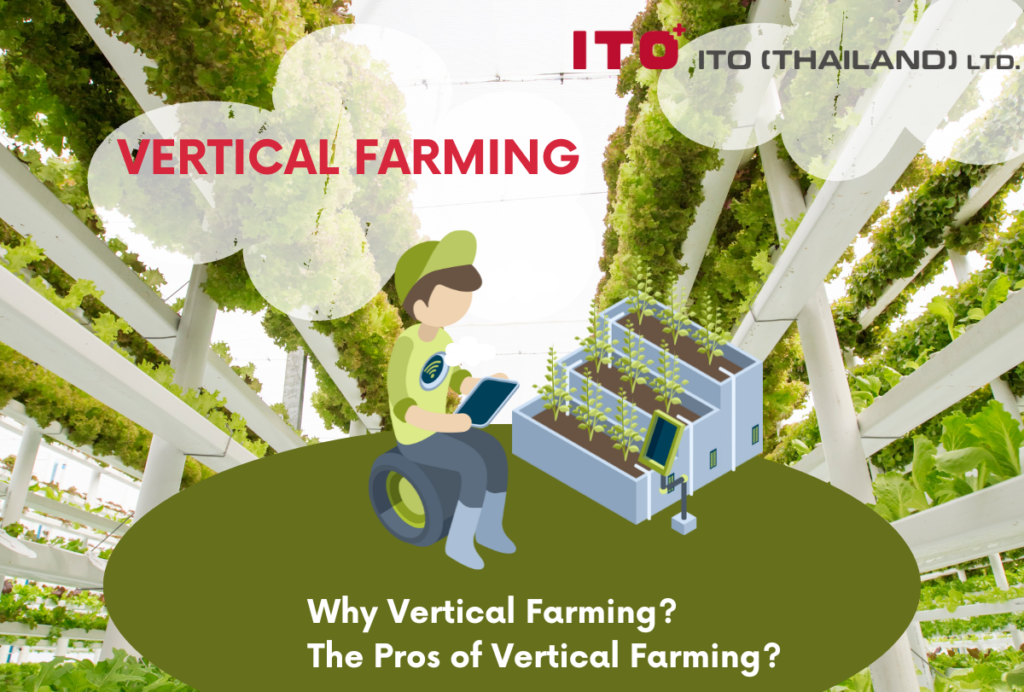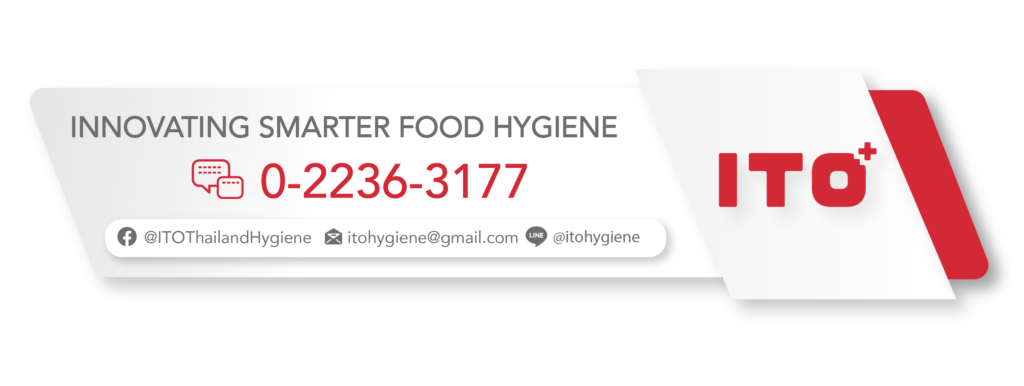ITO Thailand Hygiene Blog
Vertical Farming
History of Vertical Farming
Agriculture has utilised nearly all the available land, causing growing difficulty in finding land on the earth’s surface (3). With limited resources, meeting the world’s food demands will require more innovative and dependable methods of producing safe food, and the answer lies in vertical farming.
The Hanging Gardens of Babylon and the Chinampas of the Aztecs were the pioneers of vertical farming thousands of years ago for the efficient use of water (6). Vertical farming is a method of cultivating plants in vertically stacked layers by controlled-environment agriculture technology (CEA). The facilities are isolated from the external environment with all the required conditions for the growth of plants at different stages provided artificially, including water, temperature, humidity, ventilation, lighting, and carbon dioxide (1). It refers to a farming technique where crops are grown on top of one another instead of the conventional horizontal arrangement (2).
Why Vertical Farming? The Pros of Vertical Farming
A significant portion of the land and soil used for growing the world’s food has become depleted and unsuitable for farming. Vertical farming can be considered as a highly effective and environmentally friendly method of food production when it has the potential to achieve ten times the crop yield of a given land area without the use of pesticides. Furthermore, since the plants are grown in highly sterile conditions, there is no need to wash them before consumption, and with the ability to produce crops continuously throughout the year (9).
Moreover, farmers can reduce the overall time required for harvesting and increase the number of crops collected without sacrificing the taste or quality of the produce. Vertical farming is associated with the hydroponic technique that consumes only 10% of the water required in traditional agriculture resulting in lower demand for fertilisers and nutrients. In addition, the water used in vertical farming is purified, so it can be reused, which reduces waste. Finally, automated systems in vertical farming lessen the requirement for human labour to achieve consistent yearly production. Although work will still be necessary for managing and packaging the harvest, vertical farming reduces the associated expenses (8).
Cons of Vertical Farming (5)
Despite vertical farming having several advantages, there are also several disadvantages to consider. Firstly, vertical farming takes place in a regulated indoor environment which offers numerous benefits but also prevents the entry of insects. Consequently, pollination is severely limited, and in such cases, growers may have to resort to manual pollination, which can be laborious and expensive. Therefore, the cost implications of manual pollination are likely to persist as a challenge in vertical farming.
Next, vertical farming relies heavily on technology and can reap the advantages mentioned. However, it does not rely on a specific technology. Instead, it utilises a range of technologies for lighting, temperature regulation, humidity management, and more. These technologies can disrupt the vertical farming process. For example, a power outage could lead to substantial losses in daily crop production. Some arguments are related to modern technologies still needing to mature enough for widespread adoption in vertical farming. In contrast, others believe technology continually advances and will eventually benefit vertical farmers.
Finally, and the most impactful disadvantage, vertical farming has the potential to significantly disrupt and destabilise communities that rely heavily on traditional agriculture. It may render conventional farming outdated, which could have severe consequences for families living below or on the poverty line. It may even compete with rural agriculture, negatively impacting many people’s and communities’ livelihoods.
Technology Related to Vertical Farming
The efficiency of vertical farming is achieved through automation, which involves the use of technologies such as software, robotics, and data science to oversee crop growth and establish ideal growing conditions, including temperature, humidity, carbon dioxide level and lighting (4). In addition, several technologies are associated with vertical farming, including dosing systems for delivering nutrients to the plants and monitoring nutrient solutions, sterilisation systems for ensuring the production of pesticide-free crops, recapturing water from moist, and lighting systems, which are important as natural light is replaced by artificial lighting. The types of lighting used include fluorescent grow lights, high-pressure sodium lights, and LED lights, all of which have different characteristics and efficiencies (7).
How does CEA appear today, and what are its future trends? (1)
CEA has already demonstrated its significance in the manufacture of pharmaceuticals, especially in the production of cannabis for medicinal, cosmetic, and health supplement purposes. Cannabis is a crop with high commercial value that requires precise and consistent conditions to generate a yield that meets the necessary standards. CEA techniques provide automation for this degree of oversight, enhancing the feasibility and profitability of cannabis cultivation.
With the world population on the rise, vertical farming may offer a way to address the food crisis, particularly the issue of food insecurity. While vertical farming provides numerous advantages, developing and implementing appropriate strategies to facilitate a smooth transition for urban and rural populations to vertical farming at minimal costs is crucial. Policymakers should also be encouraged to create new laws and policies to support this emerging agricultural trend.
References
1.Bailey, M. (2023). Why Controlled Environment Agriculture (CEA) is the future of farming. Retrieved April 15, 2023, from https://www.danthermgroup.com/en-gb/calorex/why-controlled-environment-agriculture-cea-is-the-future-of-farming
2.Bowery Farming. (2023). Vertical Farming: Why Growing Up Can Make a Difference. Retrieved April 15, 2023, from https://bowery.co/vertical-farming/
3.Lawson, B., & Kaya, M. (2018). Vertical farming: from Babylon to New York. Retrieved April 15, 2023, from https://www.cambridgeconsultants.com/insights/opinion/vertical-farming-babylon-new-york
4.Masterson, V. (2022). Vertical farming – is this the future of agriculture? Retrieved April 15, 2023, from https://climatechampions.unfccc.int/vertical-farming-is-this-the-future-of-agriculture/
5.Miller, S. (2023). Advantages and Disadvantages of Vertical Farming. Retrieved April 15, 2023, from https://www.conserve-energy-future.com/advantages-disadvantages-vertical-farming.php
6.Piechowiak, M. (2021a). The Full History of Vertical Farming: When Did It All Start? Vertical Farming Planet. Retrieved April 15, 2023, from https://verticalfarmingplanet.com/the-full-history-of-vertical-farming-when-did-it-all-start/
7.Piechowiak, M. (2021b). Vertical Farming Technology: How Does It Work? Vertical Farming Planet. Retrieved April 15, 2023, from https://verticalfarmingplanet.com/vertical-farming-technology-how-does-it-work/
8.(2022). The Advantages And Disadvantages Of Vertical Farming. Retrieved April 15, 2023, from https://storm4.com/resources/intel-bites/advantages-disadvantages-vertical-farming/
9.Villazon, L. (2022). Vertical farming: Why stacking crops high could be the future of agriculture. Retrieved April 15, 2023, from https://www.sciencefocus.com/science/what-is-vertical-farming/
Related Post
-
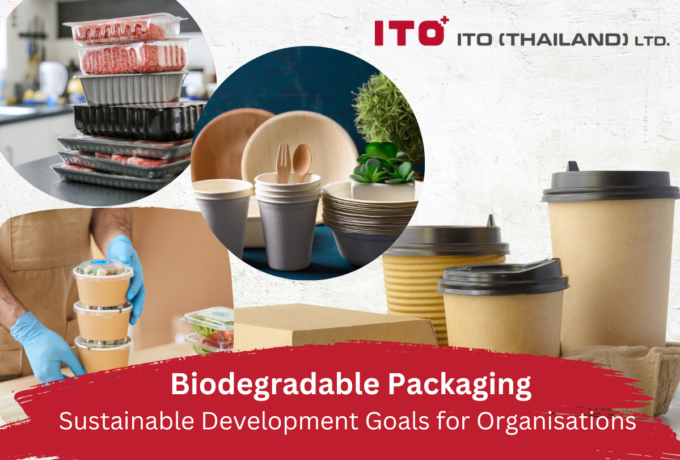
Biodegradable Packaging
As straightforward as its name, it means any packaging that will naturally fall apart and decompose. In recent years, biodegradable packaging has been included as one of the sustainable development goals for several organisations. A similar issue, bioplastics, an alternative to sustainable living, was discussed in a previous blog. However, there are some differences between them. For example, bioplastics are made from raw materials sourced from renewable and natural sources and could or could not be biodegradable. In contrast, biodegradable plastic can naturally degrade through living organisms no matter the source material it originates from. The development history of biodegradable packaging, frequently used materials, the pros and cons of biodegradable packaging, and its future trends will be discussed in this blog.
-
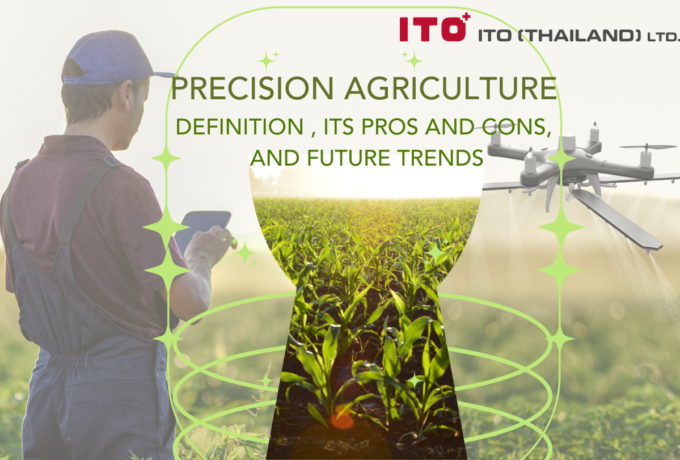
Precision Agriculture
Precision agriculture has revolutionised how we approach crop management by optimising the inputs to meet specific requirements. Even though it is not a new system, recent technologies have made it possible to apply it in practical productions. In this blog, we will discuss the definition of precision agriculture, its pros and cons, and future trends.
-
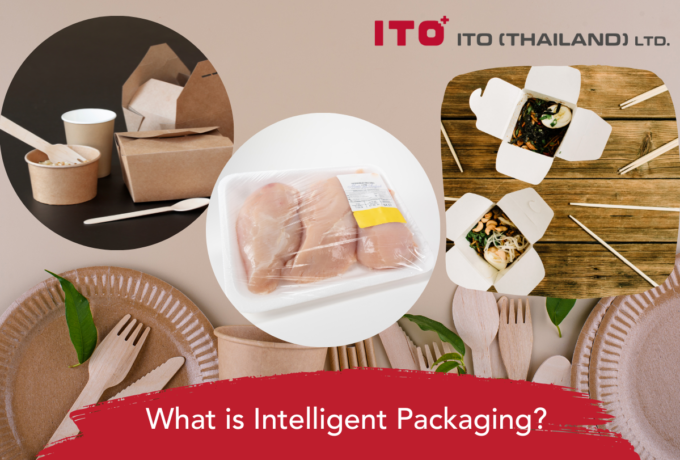
Intelligent Packaging
Without packaging, food products would last for only a short period of time, impossible for logistics management, difficulties in the supply chain system, quick quality deterioration, and prone to contamination to risky foodborne pathogens. In reality, there are many more functions that packaging is contributing to food products, as well as many types of smart packaging. Intelligent packaging is considered to be a part of smart packaging, so in this blog, we will discuss the contribution of intelligent packaging to food products.
-
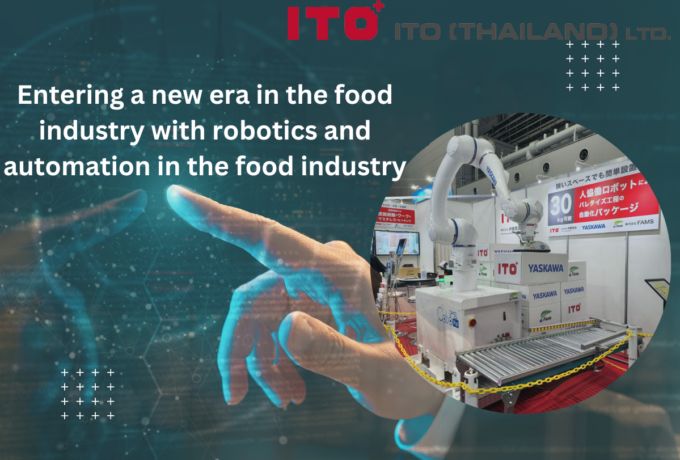
Robots & automation in the food industry
Entering a new era in the food industry with robotics and automation in the food industry
-
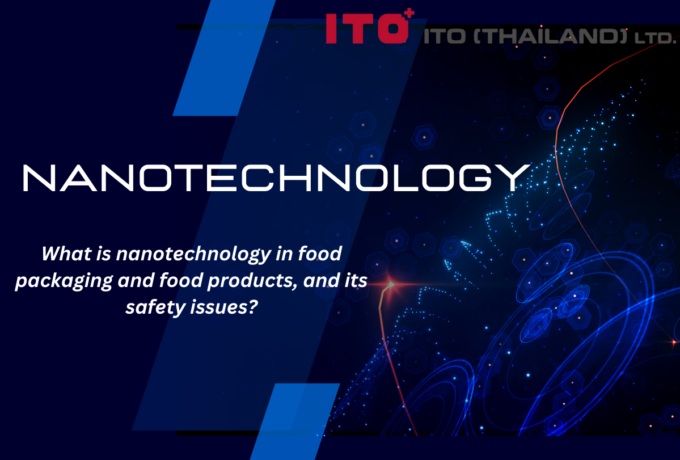
Nanotechnology in the Food Industry
Nanotechnology has been brought to our attention for the last decades, and it has provided various beneficial applications to the food industry. Unlike other technology, nanotechnology has broadened the knowledge in the food industry to another level in a nanoscale dimension. It involves almost every aspect of the food industry, including food packaging, food processing, as well as functional food development and enhancement of food safety. In this blog, we will discuss how nanotechnology is used in food packaging and food products, and the most important part, its safety issues.
-
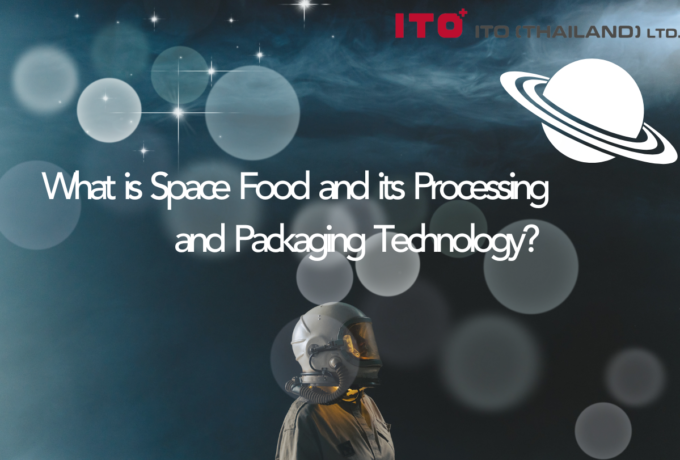
Space Food (Part 1)
In recent years, there has been a number of research in regard to foods for long-term transport. We have discussed that some types of food, such as 3D printed food, are customisable and able to create personalised meals. Doubtlessly, it is capable of long-term missions such as aerospace and military applications. Space food, its processing and packaging technology, as well as space food and waste management will be discussed in this blog.








